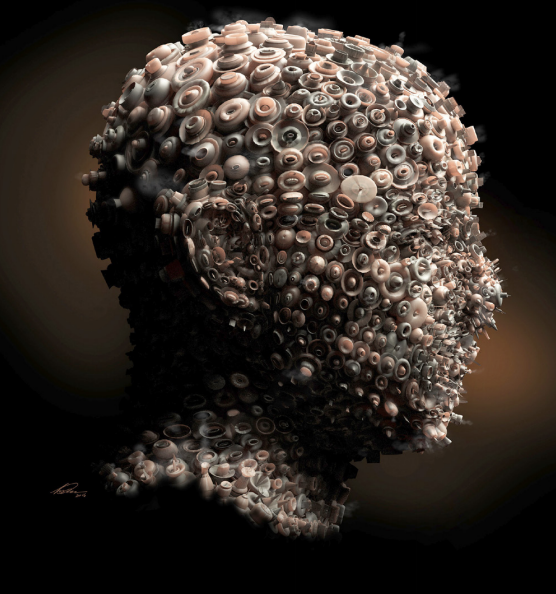The first point update adds procedural modeling to the renown direct modeling engine.
Modo 10 was released in March as three upgrades, all of which will become available to purchasers when they buy Modo 10. Modo 10.0 offers enhanced workflows for creating real-time immersive content including games and virtual reality. Support for Unity and Unreal shaders in the Modo viewer means users will get the results they expect in the game engines. Modo now offers a streamlined and repeatable texture baking workflow with wizards presets and the ability to create workflows so users can share processes. Likewise, The Foundry has created an automated export process for game engines that adds consistency for users.
The second installment of 10.01 comes with some big changes. The headline news is the new procedural modeling system. The procedural modeling system works side by side with Modo’s direct modeling capabilities and gives customers the ability to experiment and iterate in Modo with more freedom.

The new feature list
Here, for the sake of time, clarity, and sanity, is a description of the new features in Modo 10.01. However, the most efficient way to understand the significant new tools and approaches in Modo is to see the new features demoed on The Foundry site.
Nondestructive procedural stack: With Modo’s procedural modeling system, you can model nondestructively. Each successive mesh operation—such as Bevel, Extrude, Merge, Reduce, and Thicken—is added as a layer to a procedural stack, which you can modify, reorder, disable, or delete at any time. You can view the state of the mesh at any point in the stack, with future operations shown as ghosted. You can also freeze the stack up till any chosen point for improved performance.
Selection operations: Selection operations let you control which mesh elements are affected by subsequent operations in the procedural stack. By default, elements you select are automatically added to a Select By Index operation; you can add or remove elements from the selection at any time. In addition, you can define other operations to select elements procedurally. Selection operations allow selections to be rigged, animated, and dynamically updated as the input mesh changes.
Procedural variations: Procedural modeling in Modo allows you to easily create an almost infinite number of variations. For example, you could construct a procedural road, and then easily change the number of lights, the width of the road, or even the path that the road follows. You can even use textures as inputs to modeling operations; simply by changing the texture, an entirely different effect can be achieved, while all of the subsequent operations continue to be applied.
Animation and falloffs: Modo’s procedural system lets you easily animate almost any parameter within the stack. Falloffs can be used to modulate the behavior of tools within the stack; the placement of the falloffs can even be animated for interesting effects. What’s more, it’s now possible to modulate the effect of a direct or procedural tool or deformer using a textured falloff; textures can be connected to the falloff directly in the schematic or in the mesh operation stack.
Procedural text: Modo’s procedural system makes it easy to create a style for a piece of 3D text—adding thickness and bevels, for example—and then simply change the input string or the font to create new variations as required. Text can also be rigged in the schematic view, allowing the source text to be driven and dynamically changed. What’s more, the Text tool can now directly output Bézier curves that can be used to drive a new Curve Fill operation, providing an all-quad mesh.
Curve enhancements: Modo now offers B-Splines as an alternative to Bézier curves. There’s also a new procedural Curve Fill operation that lets you fill a closed curve with quads; a Curve Particle Generator that lets you easily create and adjust duplicated geometry along curves; a Curve Rebuild operation that resamples a curve into an evenly spaced set of points; a Lacing Geometry operation that extrudes a profile shape along a guided curve; and an Edges to Curves operation
MeshFusion enhancements: The advanced MeshFusion Boolean modeling toolset now offers better control of mesh topology and density for individual strips. In addition, you can now intuitively create, edit, and analyze simple Fusion models in the schematic with extended support for drag-and-drop editing, while enhanced placement options let you place and fuse multiple copies of preset meshes. Procedurally modeled meshes can be used as inputs to MeshFusion.
UV Transform, UV Constraint, and Push Influence: Making a 2D shape accurately conform to a 3D mesh—for example, when attaching a decorative stripe to a shoe—is now a quick and easy process, thanks to a new UV Transform operation. In addition, a new UV Constraint makes it easy to constrain both the position and the rotation of objects to an arbitrary position on a 3D surface. Meanwhile, a new Push Influence deformer pushes geometry along its surface normal.
The Foundry’s chief product officer, Andy Whitmore, says the new Modo has been developed with the help of customers who have asked for increased flexibility, the ability to experiment with multiple variations and iterations. Whitmore says the ability to work with direct modeling techniques and procedural processes within the same tool is “unique in the marketplace.”
What do we think?
Over this past year, we’ve seen increased interest in procedural tools— they’re time saving, can open creative avenues, and may be particularly useful in design applications where customers may want to build roadways, add trees and bushes, create materials without too much direct modeling input, and have the ability to easily adjust and iterate. At NAB this year, Vizrt announced an alliance with Allegorithmic to enable realistic material generation. Likewise, Bentley Systems acquired e-on software for its ability to generate realistic plants and greenery, as well as roads and paths. Definitely looks like a trend.





